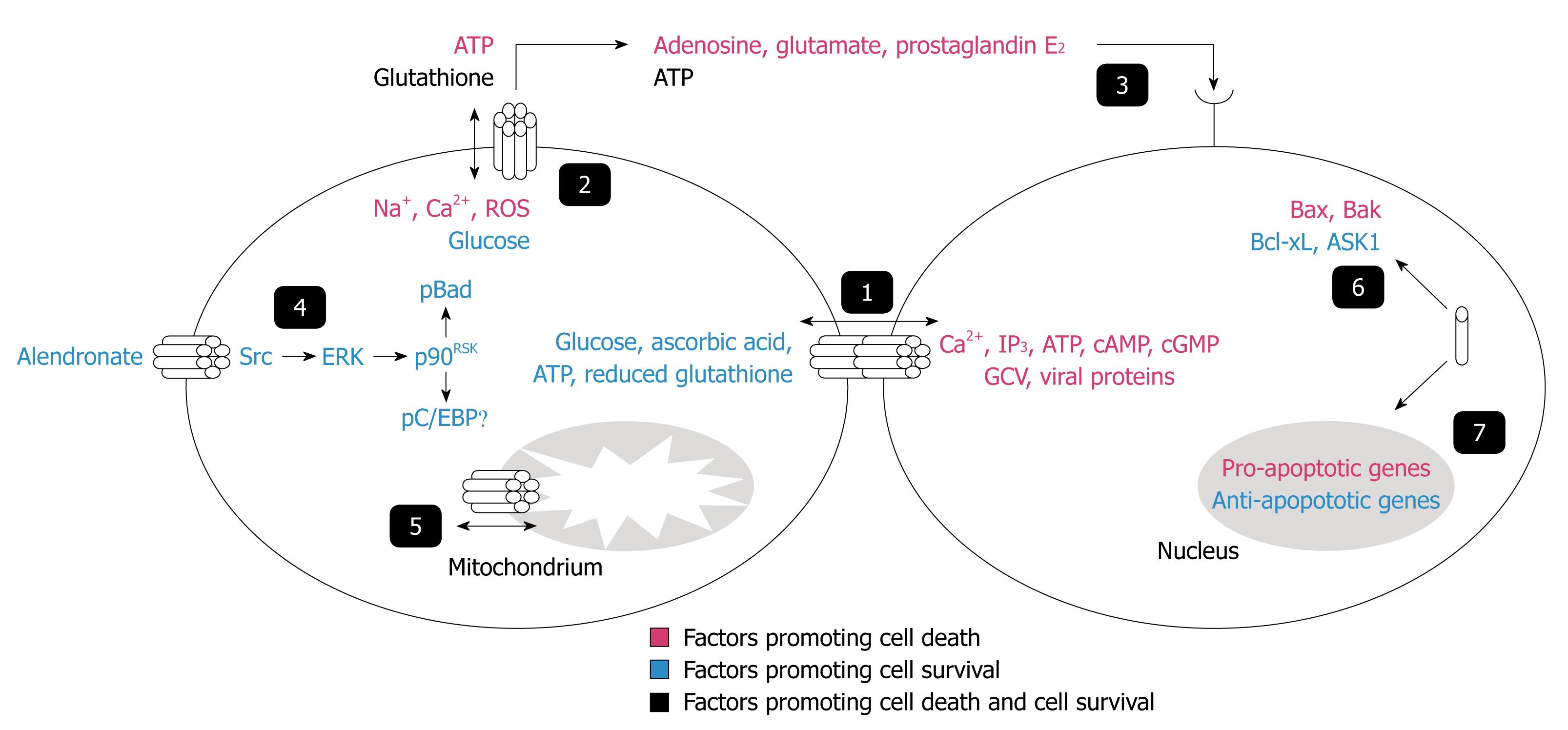Copyright
©2011 Baishideng Publishing Group Co.
World J Gastrointest Pathophysiol. Oct 15, 2011; 2(5): 82-87
Published online Oct 15, 2011. doi: 10.4291/wjgp.v2.i5.82
Published online Oct 15, 2011. doi: 10.4291/wjgp.v2.i5.82
Figure 1 Mathieu Vinken, Professor, PhD, PharmD, ERT, Department of Toxicology, Faculty of Medicine and Pharmacy, Vrije Universiteit Brussel, Laarbeeklaan 103, B-1090 Brussels, Belgium.
Figure 2 Molecular architecture of gap junctions.
Gap junctions are grouped in plaques at the cell plasma membrane surface and are composed of twelve connexin proteins, organized as two hexameric hemichannels of two apposed cells. The connexin protein as such is organized as four membrane-spanning domains (TM1-4), two extracellular loops (EL1-2), one cytoplasmic loop (CL), one cytoplasmic amino tail (NT) and one cytoplasmic carboxy tail (CT).
Figure 3 Connexin-related signaling in cell death.
Connexins can affect the cell death process through a number of mechanisms, involving GJIC (1), hemichannels (2-5) and connexins proteins as such (6, 7). Gap junctions can accommodate direct exchange of cell death and cell survival signals between cells (1). Hemichannels may contribute to cell death by four different mechanisms, namely by the entry of cell death or the loss of cell survival signals (2), through paracrine signaling of death or survival messengers (3), by hemichannel-mediated transmembrane signal transduction (4), or by affecting mitochondrial functioning (5). Connexin proteins as such can associate with cell death regulators (6) or influence the expression of these molecules (7). Hemichannels composed of pannexins may act as a permeabilization pore by itself or as a part of the P2X7R death complex (8), allowing adenosine triphosphate (ATP) to leave the cell or bacterial molecules to make their way into the cell. Although solid scientific data are currently not available, both processes might contribute to cell death. It should be noted that many of the first and second messengers depicted are not cell death or survival messengers per se, but rather substances that may lead to cell death or survival under specific conditions that are discussed in the text. ASK1: Apoptosis signal-regulating kinase 1; cAMP: Cyclic adenosine monophosphate; cGMP: Cyclic guanosine monophosphate; ERK: Extracellular signal-regulated kinase; GCV: Ganciclovir; IP3: Inositol trisphosphate; pBad: Phosphorylated Bad; pC/EBP: Phosphorylated CCAAT/enhancer-binding protein; ROS: Reactive oxygen species.
- Citation: Vinken M. Role of connexin-related signalling in hepatic homeostasis and its relevance for liver-based in vitro modelling. World J Gastrointest Pathophysiol 2011; 2(5): 82-87
- URL: https://www.wjgnet.com/2150-5330/full/v2/i5/82.htm
- DOI: https://dx.doi.org/10.4291/wjgp.v2.i5.82















